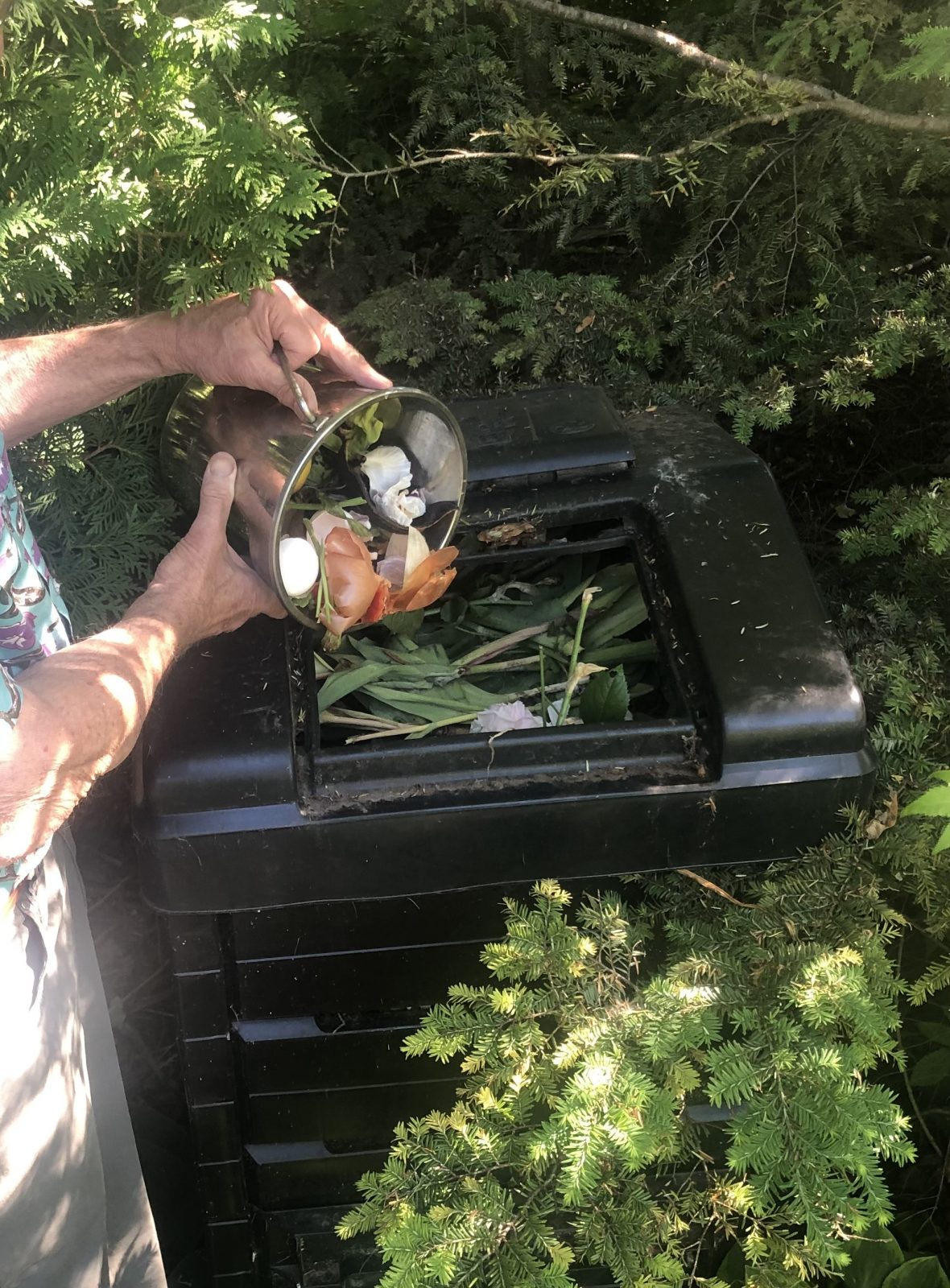All the talk of recycling organic waste to increase the life of the landfill has people thinking about composting. It may be a few years before we see the green bins at the curb and in the meantime we can all get a little practice at diverting some of our organic waste and to experience the magic of producing free organic garden fertilizer. It’s also fun to get small children involved. So – where to start?
CONTAINER: There are all shapes and sizes to fit small or large spaces. You can purchase one from a garden center, or you can make one using an online tutorial. Containers can be made from plastic storage tubs, wooden pallets, old garbage cans or even a section of chicken wire formed into a circle or square area. I also know someone who is super casual and just tosses the waste into a pile at the back of his property and covers it with leaves.
GREENS AND BROWNS: Layering fresh green kitchen and garden waste (think fruit and vegetable peelings, coffee grounds, tea leaves, eggshells, grass clippings, and vegetable plant remains) with dry, brown matter (like dead leaves, dead plants and weeds, and hay) is best. The green waste is nitrogen-rich and the brown waste is carbon-rich – both are ideal for developing good compost. I keep a bag of leaves beside my compost bin and simply throw a handful of leaves over each pail of kitchen waste.
DON’Ts: Don’t put any meat, bones, fat or dairy products in your compost – it attracts critters! We’ll have to wait for the curbside pickup for that. Also don’t add any twigs or woody material – it will not break down and will make the compost hard to use later
MOISTURE: Your compost pile should be damp but not soaked. Layering greens and browns helps to keep the right moisture balance.
AERATION: The more active compost maker will turn it every few weeks so the organic material breaks down more quickly but even if you don’t, after a whole season I find that it still produces nice compost at the bottom of the bin.
USE OF COMPOST: Gardeners always say you can never have enough compost! Luckily, if you don’t produce enough yourself, compost is available free from the City of Cornwall. It’s made in much the same way, using the leaves and yard waste. Visit the landfill site and see how they do it. There are piles of yard waste bags that get turned several times and over the course of a year – presto – chango – it turns into nice black compost.
To fertilize trees, shrubs, flowers, vegetables spread a 3-inch layer over the soil. Over time, worms and rain water will push the compost into the soil, feeding your lawn and garden in the process.
For more information on Transition Cornwall+ go to www.transitioncornwall.com




